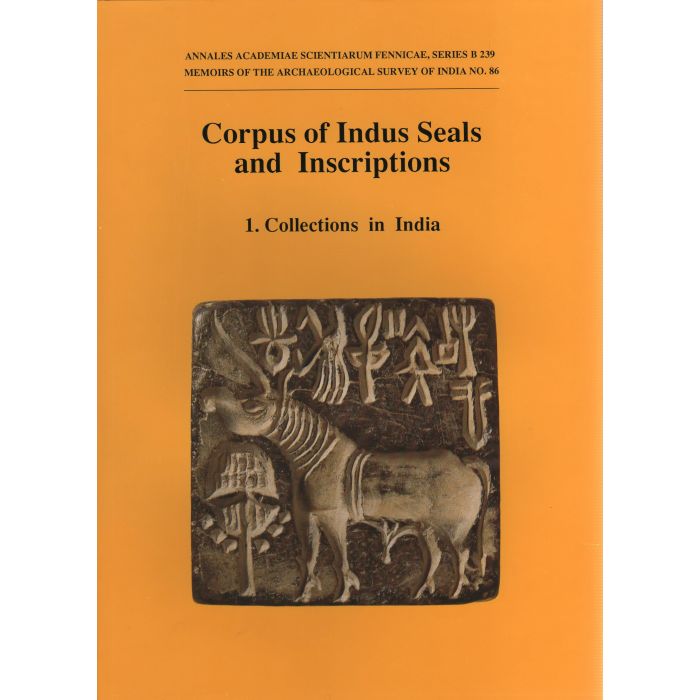Käytämme evästeitä parantaaksemme käyttäjäkokemustasi. Noudattaaksemme uutta sähköisen viestinnän yksityisyysdirektiiviä, meidän täytyy pyytää sinulta lupaa evästeiden asettamiseen. Lue lisää.
Corpus of Indus Seals and Inscriptions. 1
50,00 €
Varastossa
SKU
951-41-0555-9
Corpus of Indus Seals and Inscriptions. 1. Collections in India
Ed. Jagat Pati Joshi & Asko Parpola with the assistance of Erja Lahdenperä & Virpi Hämeen-Anttila
Finnish Academy of Science and Letters
Annales Academiae Scientiarum Fennicae. Humaniora 239. Memoirs of the Archaelogical Survey of India 86
1987, XXXII + 392 pp.
Ed. Jagat Pati Joshi & Asko Parpola with the assistance of Erja Lahdenperä & Virpi Hämeen-Anttila
Finnish Academy of Science and Letters
Annales Academiae Scientiarum Fennicae. Humaniora 239. Memoirs of the Archaelogical Survey of India 86
1987, XXXII + 392 pp.
Special offer: Volumes 1, 2, 3.1 and 3.2. bought together 300 €. Contact direct to [tiedekirja(at)tsv.fi]
Corpus of Indus Seals and Inscriptions (CISI) has as its purpose to make available for research, in as good photographs as possible, all available seals and inscriptions relating to the Indus Civilization, including its Early Harappan and Late Harappan phases of development. This material is fundamental for the research of the poorly understood script, language, and religion of the Indus Civilization, and a major outlet for its art. The seals and other types of inscribed artefacts are also important for the study of the Harappan social, political and economic organization, including administrative practices, external cultural contacts, internal trade and various techniques, such as seal carving. The Indus Civilization flourished in Pakistan and Northwestern India, and its Mature phase is dated to 2600–1900 BCE.
Corpus of Indus Seals and Inscriptions (CISI) has as its purpose to make available for research, in as good photographs as possible, all available seals and inscriptions relating to the Indus Civilization, including its Early Harappan and Late Harappan phases of development. This material is fundamental for the research of the poorly understood script, language, and religion of the Indus Civilization, and a major outlet for its art. The seals and other types of inscribed artefacts are also important for the study of the Harappan social, political and economic organization, including administrative practices, external cultural contacts, internal trade and various techniques, such as seal carving. The Indus Civilization flourished in Pakistan and Northwestern India, and its Mature phase is dated to 2600–1900 BCE.
| Kustantaja | Suomalainen Tiedeakatemia |
|---|---|
| ISBN | 951-41-0555-9 |
| ISSN | 0066-2011 |
| Sarja | Annales Academiae Scientiarum Fennicae. Humaniora |
| Sarjanro | 239 |
| Painovuosi | 1987 |
| Kielet | englanti |
| Tieteenalat | Orientalistiikka |


